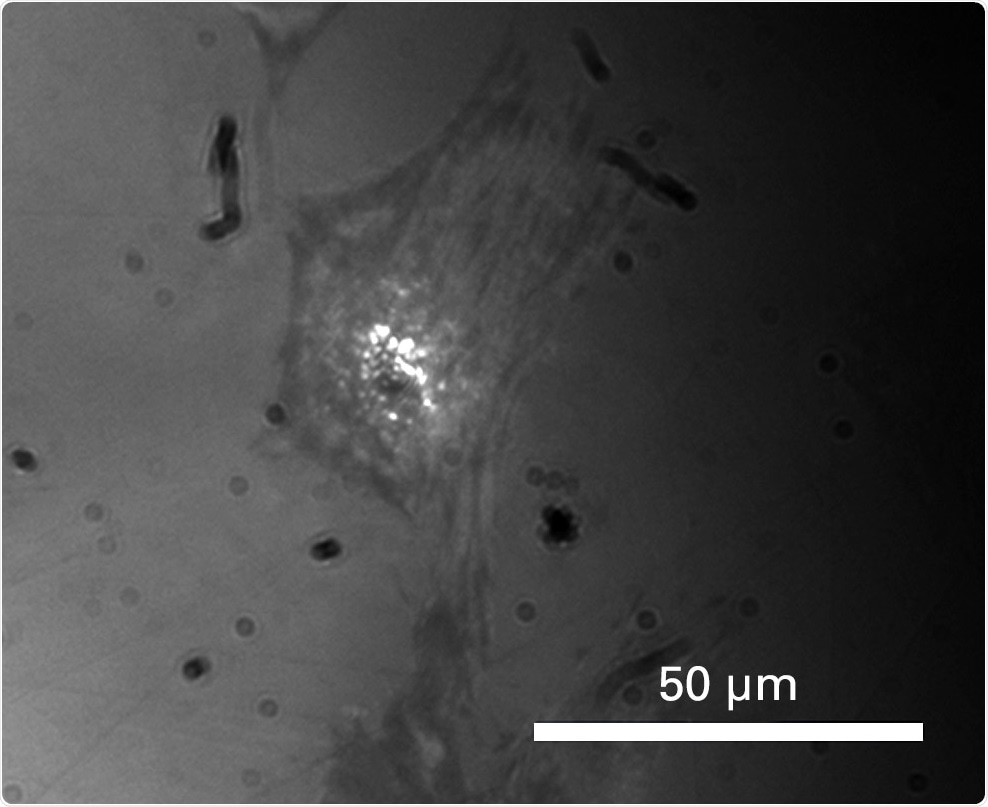Bruker’s Hysitron® BioSoft™ In-Situ Indenter is a first-of-its-kind instrument specifically designed for multiscale quantitative mechanical testing of biological materials and soft matter, such as hydrogels. BioSoft synchronizes powerful mechanical and optical characterization techniques to achieve a comprehensive understanding of the mechanics of biomaterials. This portable system integrates with existing inverted optical microscopes to bring advanced biomechanical testing capabilities into your laboratory.
Maximized Test Flexibility
- Integrates with inverted microscopes to characterize a broad range of biological materials
- Easily transports into any laboratory with the included watertight carrying case
- Enables biomechanical testing while maintaining the capability to perform complex experiments with simple operation and multi-user software
- Achieves results quickly with easy changing between a wide variety of probes in under a minute

1 mm spherical probe in contact with osteoblast cell. Courtesy of Bruker Nano Surfaces.
Quantitative Soft Biomaterials Characterization
Incorporating decades of knowledge in soft matter testing, Bruker’s Hysitron BioSoft provides a unique combination of force sensitivity and displacement range to provide quantitative mechanical property measurements on sub-cellular to tissue levels. Streamlined system operation delivers the results you need quickly, minimizing the need to become an experimental expert and providing an easy portal to biomechanical characterization.
ioSoft In-Situ Indenter Features
- Quantitative mechanical characterization for your optical microscope
- Seamless integration with inverted microscopes for maximum test flexibility
- Synchronized mechanical and optical characterization techniques
- Characterization of specimens on sub-cellular to tissue levels
- In-situ observation during mechanical testing
- Advanced targeting and precision
- Access to physiological pressures from Pa to kPa
- Open platform for testing in fluid and environmental control
- Customizable probes
|
Normal Loading (Quasi-static Testing)
|
Maximum Force: 10 mN Load Noise Floor: <750 nN
Normal Force Bit Resolution: 1 nN
|
|
Normal Displacement (Quasi-static Testing)
|
Maximum Displacement: 150 µm Displacement Noise Floor: <1 nm
Normal Displacement Bit Resolution: 0.006 nm Thermal Drift of Sensor: ≤0.05 nm/sec
|
|
BioMech Control Module Specifications
|
|
Maximum Data Acquisition Rate
|
96 kHz
|
|
Maximum Data Sampling Rate
|
48 kHz
|